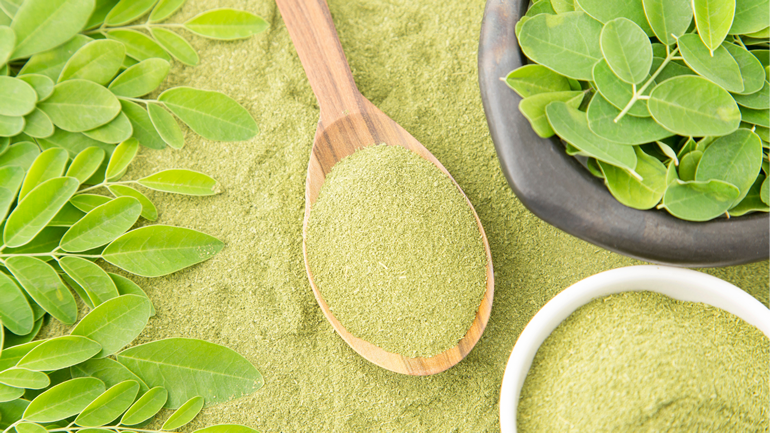
“Superfood” is a relatively new term. There’s no legal definition or technical criteria for what is or is not a superfood. So, the word gets overused a bit in marketing.
The general idea is that a food that truly earns superfood status is absolutely packed with nutrition. A superfood is loaded with nutrients, vitamins, minerals, and antioxidants. You get maximum nutritional benefit by consuming a minimal number of calories.
No matter how you classify superfoods, there’s one special plant that’s sure to qualify: moringa.
Moringa holds its own against any well-known superfood. It tastes like matcha, but provides caffeine-free energy. It’s anti-inflammatory properties rival turmeric, and it’s a nutritional powerhouse that makes kale blush.
Let’s explore this wonderful plant known as “The Tree of Life”—how we came to know it, its uses, and its wonderful nutritional benefits.
What Part of the World Is Moringa From?
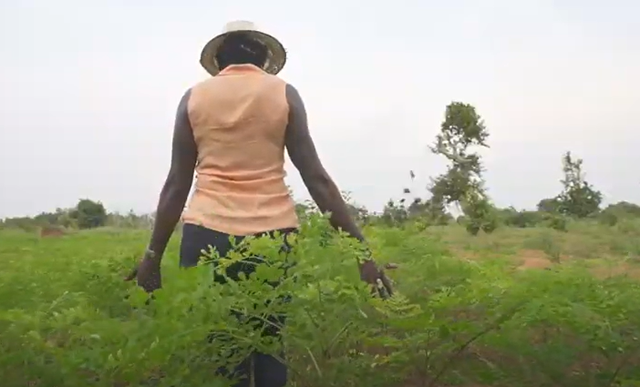
Moringa is native to India and neighboring lands on the Indian subcontinent. Today, it’s grown in this region as well as throughout the global tropics.
There are 13 species of moringa. The most commonly-cultivated variety is moringa oleifera.
Moringa grows wild or in cultivation in many parts of the world where the climate is appropriately warm. These include:
- South Asia
- Southeast Asia
- The Philippines
- Indonesia
- The Caribbean
- Central America
- South America
- Africa
In most areas where growing conditions are tropical or subtropical, moringa will thrive. It’s a highly adaptable tree, able to grow in a variety of conditions.
Moringa remains important on the Indian subcontinent. It’s also become a fixture in various parts of Africa, including Somalia and Ethiopia. Some moringa species are even indigenous to the African continent.
Moringa and its superfood qualities are warmly welcomed in farms and kitchens around the world. Now, let’s learn a bit more about the history and use of this dynamic and prolific tree.
Moringa’s History of Use
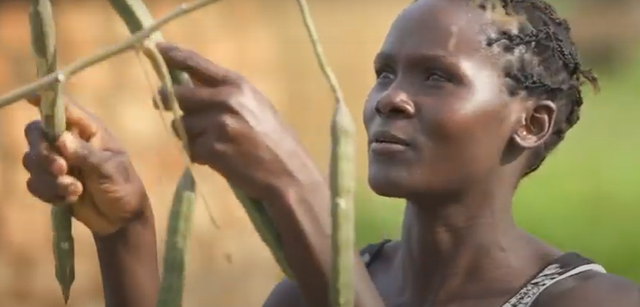
Moringa’s precise point of origin is unknown, but the plant was likely first cultivated within the borders of modern-day India. From there, it spread to neighboring countries.
The “Tree of Life” has long been valued in South Asian nations like Pakistan, Afghanistan, and Bangladesh.
The modern surge of appreciation for moringa is nothing new. The plant has always been embraced by cultures that have newly discovered it. These include the ancient Egyptians, Greeks, and Romans.
What attributes have contributed to moringa’s popularity through history and around the world? Well, first and foremost, there are the fantastic nutritional benefits which we’ll get into in a moment.
But like many other plants favored by ancient peoples, moringa has also been widely employed in traditional medicine. Traditional medicinal uses have been broad, and include the treatment of pain, asthma, wounds, and numerous other ailments.
Thanks to moringa’s powerful anti-inflammatory properties, its prominence in traditional medicine is no surprise.
Aside from the treatment of illness, moringa has been utilized for various lifestyle products. The ancient Romans, Greeks, and Egyptians all used moringa oil to make perfumes and other wellness products.
Ancient Egyptians used moringa oil to make anti-wrinkle creams. In fact, jars of moringa oil have even been found in Egyptian tombs, suggesting that it had great value.
Moringa shows promise for continued medicinal use. However, the plant’s medicinal benefits are less studied and less documented compared to its nutritional prowess. That’s beginning to change, however, as new research explores moringa’s medicinal potential.
What we know for sure is that moringa grows well in many lands. The moringa tree is hearty, drought-tolerant, and fast-growing. A young tree can gain 18 feet in height in just a six month period.
Better yet, all parts of the tree are edible—the leaves, seeds, roots, and even the bark. And, of course, moringa provides outstanding nutritional value to the communities that grow it as well as the countries that import moringa products.
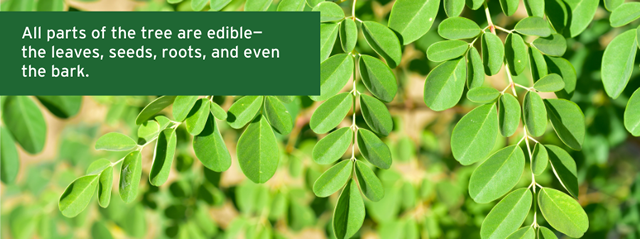
Moringa’s Incredible Nutritional Benefits
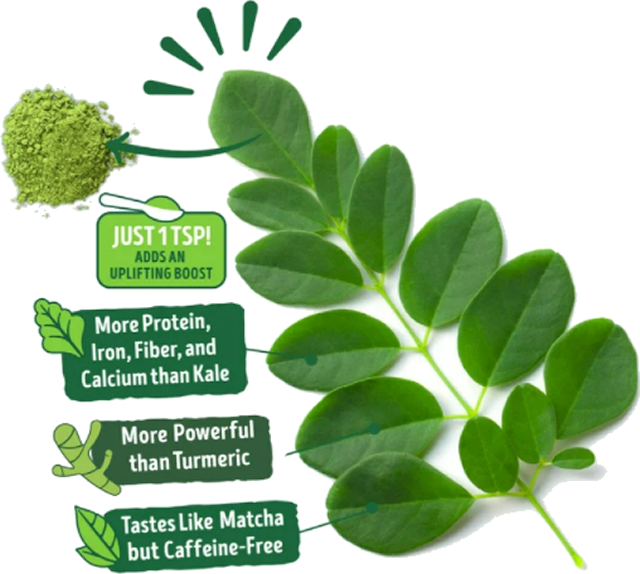
There’s a lot to love about moringa, but it’s the nutritional facts that typically occupy the headlines.
Healthy eaters around the world are always looking for superfoods that are bursting with nutrients. They believe they’ve found a good one in moringa—and they’re absolutely right.
“I recently had the opportunity to try this superfood shake and I LOVE IT. It tastes great, doesn’t have any weird after tastes or anything and isn’t “chalky” like some protein shakes. I’ve had it every day in the morning this week, and have felt energetic and full for most of the morning! I definitely recommend, and will be buying again.”
—Karlie, ★ ★ ★ ★ ★ Reviewer
There’s no single set of numbers that’s used to sum up moringa’s nutrition facts. Different amounts or forms of the plant (e.g. raw leaf vs. powder form) have been used for nutritional research, so you’ll find some variation.
Here’s what you’ll get from a 100 g portion of raw moringa leaves:
| Moringa Nutrition Facts | |||
| Amounts based on a 100-gram serving of raw leaves | |||
| Source: ScienceDirect.com | |||
| Calories | 92 | ||
| Protein | 6.7 g | ||
| Calcium | 440 mg | ||
| Fiber | 0.9 g | ||
In areas where moringa is grown, the raw leaves and other parts and forms of the plant are consumed. Where moringa production for export occurs, the raw leaves are typically converted into a pure powder form.
Moringa powder is a concentrated and dynamic form of the plant. The powder can be sold directly for consumers to work with, or turned into healthy snacks and drinks like energy bars or teas.
Adding Moringa to Your Diet and Daily Routine
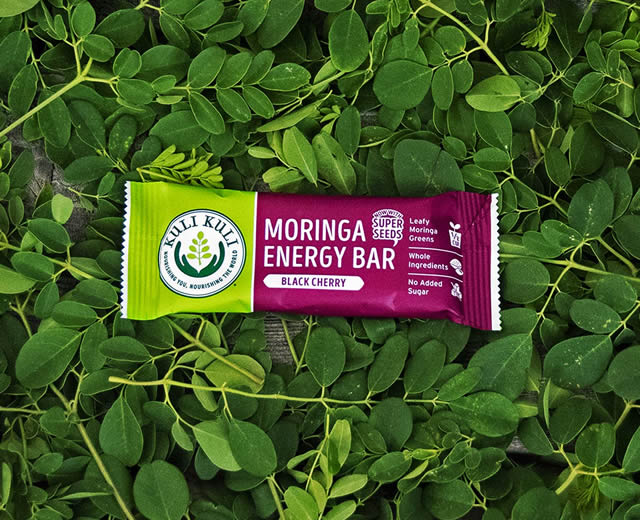
Adding moringa to your diet is easy and gratifying. Leaves of “The Miracle Tree” are used to create a powder, and that powder can be put into all sorts of healthy supplements, drinks, and snacks.
At Kuli Kuli Foods, we’re always finding new and exciting ways to bring moringa’s nutritional superpowers into your daily routine. The table below shows our current set of moringa offerings.
| How to Get Your Daily Serving of Moringa | |||
| Organic Powders |
|
||
| Moringa Snacks |
|
||
| Moringa Drinks |
|
||
Moringa’s taste is similar to that of matcha. It’s tough to characterize, but it’s a flavor sometimes described as earthy, grassy, or green. There are a lot of flavors going on, including hints of bitterness, sweetness, and umami.
Some folks quite enjoy the taste of moringa. Others prefer to combine it with stronger and sweeter flavors, allowing the moringa to take on a more complementary role.
We hope you’ll agree that our products are delicious. However, the Kuli Kuli Foods mission is about much more than just taste, or even nutrition.
Kuli Kuli Foods was founded to do good—for customers as well as for the communities and individuals involved in production.
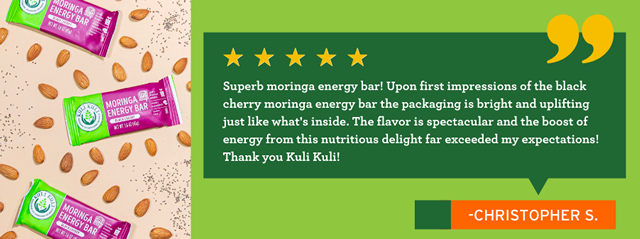
Nourishing Individuals, Communities, and the Planet
The dream behind the founding of Kuli Kuli Foods was to bring the power of a special superfood to the American market, while simultaneously empowering small farmers and female farmers around the world.
Today, our mission is to nourish women and the planet through naturally energizing, nutritious, and sustainable plants.
Moringa absorbs carbon dioxide much quicker than typical vegetation. We’ve planted and preserved over 24 million moringa trees that absorb an estimated 300–900 million kilograms of carbon dioxide each year.
In addition to carbon sequestration, the trees are utilized in numerous land stewardship techniques: wind shielding, soil conservation, and semi-shading for other crops that shouldn’t receive direct sunlight.
While working with these miraculous trees, we’ve supported 3,000 women and family farmers. Our moringa is sourced from rural and remote areas, and only the leaves are harvested. We prioritize our relationships with farmers, their communities, and the ecosystems they support.
“My first order of this was actually through a different vendor. Loved it! So came directly to this site to purchase more. Glad I did! Both my husband and I notice a dramatic change in energy levels. We have energy all day when we start our mornings with moringa! I do the morning moringa dance! Lol! Great stuff! Thanks for providing such a wonderful product.”
—Danielle, ★ ★ ★ ★ ★ Reviewer
Kuli Kuli Foods products are certified organic and inspected in the US.
Visit our online store to choose from our selection of nutritious, ethically-produced moringa products.
Order online or find our moringa goods at over 11,000 stores across the United States. Find Kuli Kuli Foods products at your local Wal-Mart, Whole Foods, Safeway, or Sprouts.
If you’d like to learn more about moringa, its impact on communities, and its fabulous superfood properties, visit our blog.
Share on Facebook:
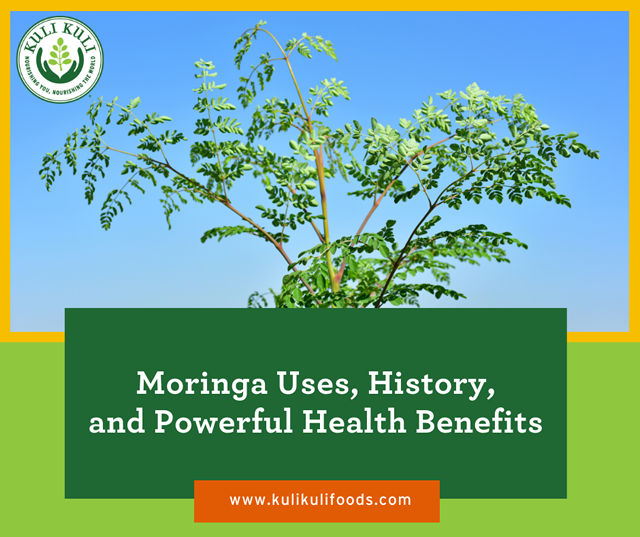






Very informative. Was given a bag of your product, and will try it this week. I believe that anything Ayurveda and TCM like as a healer must be good. If it didn’t work, you would know in 4000 years ! ha
Can I give a smaller portion of the Super Gummies to my 6 and 7 year olds?